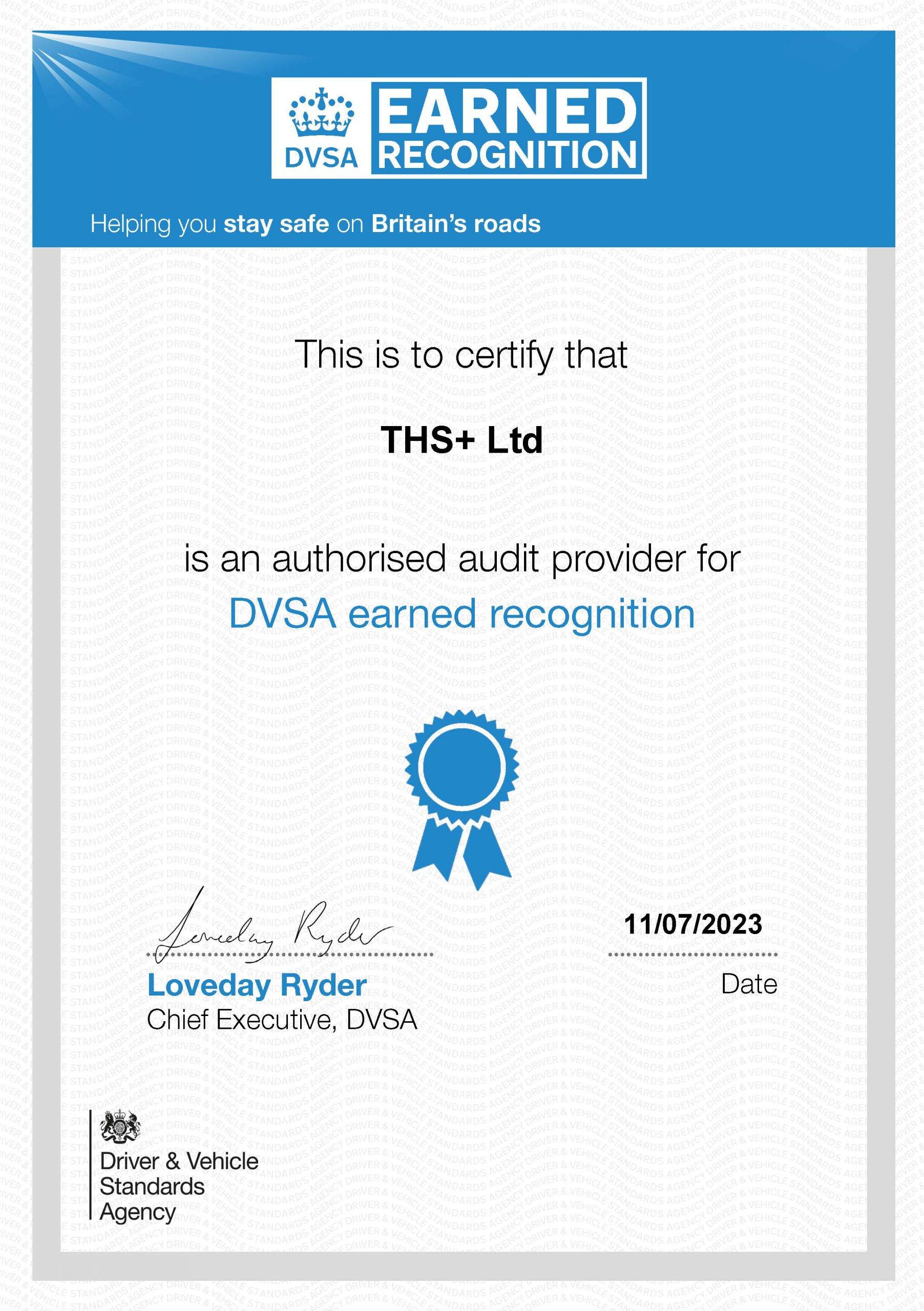Transport Manager CPC Refresher Training Course Benefits: Whether you are a trainer or learner, many of us have discovered through personal experience that what we learn fades with time. The human brain is extraordinarily good at dumping knowledge that we don’t ‘need’ – that is, information that we don’t utilize on a regular basis. So, we must find ways to communicate to our brains that the information we have stored is still relevant.
In a learning and development environment, this means that most employees will need to revisit critical topics from time to time. This is why refresher training comes in handy. A transport manager CPC refresher training course session is intended to take learners back to the basics, allowing them to review principles they may have forgotten or upskill on new material they may be ignorant of.
In this article, we will look at why your business might require refresher training, the advantages, and how to develop and conduct a successful refresher training program.
What Is Transport Manager CPC Refresher Course Training?
TM CPC Refresher training is a sort of training program that is aimed to refresh or update the knowledge and abilities of people who have already completed a training course or have expertise in a certain industry. Refresher training is intended to ensure that employees keep a high level of competency in their skills and knowledge, particularly in industries where changes occur quickly and new approaches or practices arise.
Classroom sessions, on-the-job training, online courses, workshops, and seminars are all examples of refresher training. Depending on the needs of the person and the organization, it can cover a wide variety of subjects, from fundamental skills review to more advanced themes.
In industries where safety is crucial, such as healthcare, aviation, and construction, refresher training is frequently necessary to ensure that staff are up to speed on the newest safety procedures and laws. It is also employed in industries like technology, banking, and sales, where technology, legislation, and market trends change on a regular basis.
Why Is TM CPC Refresher Course Training So Important?
Transport Manager CPC refresher training course is important for several reasons:
Retention of information and skills: Refresher training aids in the retention of previously taught knowledge and abilities. People tend to forget some things or get complacent in their work as time passes. Refresher training refreshes their memory, reinforces their abilities, and reduces the possibility of mistakes.
Refresher training is necessary in sectors where new technology, practices, or legislation emerge often. Keeping up with the newest advances in the sector can help people do their jobs more efficiently and successfully.
Transport Manager CPC refresher training course is frequently necessary to satisfy regulatory or compliance obligations. Professionals in areas such as healthcare or aviation, for example, must undergo frequent refresher training to keep their licenses or certificates.
Improving productivity and performance: Refresher training may assist individuals in developing new skills, improving problem-solving abilities, and overall performance. It can also promote confidence, leading to higher productivity and work satisfaction.
Refresher training is frequently necessary to satisfy regulatory or compliance obligations. Professionals in areas such as healthcare or aviation, for example, must undergo frequent refresher training to keep their licenses or certificates.
Refresher training is essential for safeguarding workplace safety. Workers in areas such as manufacturing or construction must be knowledgeable of the most recent safety practices, equipment, and laws in order to avoid workplace mishaps or injuries. Refresher training can assist to reinforce safety rules and ensure that employees stay alert in maintaining a safe workplace.
Overall, refresher training is an important part of professional development because it can benefit both individuals and organizations in a variety of ways.
Benefits of TM CPC Refresher Training Course
Refresher training offers several benefits for individuals and organizations, including:
Improved knowledge and skills:
Refresher training allows people to brush up on their knowledge and abilities, which can lead to better work performance and productivity.
Increased confidence:
Refresher training can boost individuals’ confidence in their ability to perform their job duties effectively, leading to better job satisfaction and motivation.
Better compliance:
Refresher training may help individuals and organizations stay in compliance with regulatory and industry standards, lowering the risk of fines, penalties, or legal problems.
Enhanced safety:
Refresher training is vital for maintaining a safe work environment, particularly in areas where safety is paramount. Accidents, injuries, and fatalities can all be reduced with regular training.
Adaptability:
Individuals who receive refresher training can better adapt to changes in their industry or profession, such as new technologies, practices, or regulations. This can boost their capacity to function in a variety of settings and adjust to changing obstacles.
Cost-effective:
As a result, it focuses on specific areas of knowledge or skill development rather than a comprehensive overview of the subject matter, refresher training is often more cost-effective than initial training.
Increased competitiveness:
Refresher training may help organizations stay competitive by ensuring their personnel have current knowledge and skills, which leads to enhanced performance, productivity, and creativity.
In summary, refresher training offers numerous benefits that can help individuals and organizations stay up-to-date, compliant, safe, and competitive in their field.
Signs Your Workplace Needs Trasport Manager (TM) CPC Refresher Training Course
As with any other training intervention, you will need to conduct some research before deciding whether or not a refresher training program would be beneficial to your organization. To begin, here are five critical signs that may indicate that refresher training is necessary.
1. Repeated mistakes:
Perhaps you’ve noticed common errors in reports or communications that appear on a regular basis. If those documents are sent to or communicated to external stakeholders, this should raise red flags. Perhaps you’ve noticed that products on the manufacturing line aren’t being assembled properly, or that they’re passing QC inspections but not meeting your company’s quality standards. Mistakes happen in any profession, but if the same mistakes are done frequently by several individuals, it is a clear indication that refresher training is required.
2. Updates are not understood or used: Technology
If your organization utilizes technology that is updated on a regular basis, you may see that it is being used incorrectly, not at all, or that it is being underutilized and employees are not making use of its new capabilities. This is most likely due to the fact that you do not provide refresher training on how to utilize the technology when it is upgraded. This is also true for machinery and systems used in manufacturing, healthcare, construction, and nearly every other business you can think of.
3. New and renewed policies and procedures are not followed
You may begin to see errors every time new policies are published, indicating the need to send out refresher material a few times before staff grabs onto the new policies. This is especially true in the healthcare industry, where new regulations are frequently implemented on a weekly basis in reaction to incidences and in collaboration with agencies such as the CDC and the WHO.
4. Productivity decreases and employee churn increases
This is the dreaded metric that no company wants to see. Employees will cease being productive if they are not confident in their skills to complete a task or are unsure of what is expected of them in terms of KPIs or objectives. If the problem is not rectified, employees may begin to leave in large numbers. If you find that workers’ work productivity is decreasing or the quality of their work is declining, now is a good opportunity to conduct refresher employee training on essential activities and performance indicators.
5. Increase in workplace accidents and safety incidents
If your company has a significant number of workplace injuries, refresher safety training may be necessary. More accidents and injuries occur when employees, for example, forget proper safety protocols to follow when operating machinery or forget how to operate machinery effectively. Another example would be a rise in the number of slip and fall incidents or an increase in the number of workers or customers visiting the emergency department. In certain circumstances, such as with the Bloodborne Pathogens Standard, OSHA requires refresher training in occupational health and safety whenever policies or procedures change or new job duties are introduced, and it is the employer’s sole obligation to conduct this retraining to stay compliant.
6. Customer satisfaction rates plummeting
If you see a pattern of valid complaints or concerns from consumers, it may be time to develop some refresher training. This is vital for customer support and sales representatives, as well as the personnel who operate in order fulfillment jobs.
It goes without saying that if at all feasible, you should not delay implementing your refresher training until you observe the above-mentioned indicators – a proactive approach to continual learning always pays benefits and will save you a lot of time and money in the long run.
TM CPC Refresher Training Course Methods:
So, you’ve discovered a need for a TM CPC refresher training Course in your organization, but what’s next? The next obvious step is to select a training technique, or mix of approaches, to give refresher training to your staff. Here are the main methods to consider:
1.Face-to-face/classroom training
An instructor will give traditional classroom-style training. The key advantages of this technique include interaction between the teacher and the trainees, as well as the opportunity to ask questions and adjust the framework of a course to the group being taught. The negatives include the cost, logistics, and probable health consequences in the present worldwide epidemic.
2. Virtual classroom
This classroom-style instruction is offered electronically by an instructor using web conferencing software. The key advantages of this strategy are that it keeps the teacher and trainees engaged, and it allows employees to attend remotely from home or any other location. Depending on the platform, the trainer may have access to extra interactive components like as whiteboarding, questionnaires, and on-screen painting, which may help spice up the sessions and keep participants engaged. The negatives include the possibility of technical glitches and the fact that the training must still be planned – it is synchronous instruction.
2. Online courses (eLearning)
Online courses have grown in popularity, particularly in the previous six months, and for good cause. There are several advantages to using eLearning as your primary means of delivering refresher training. Content production is quick and easy with the correct tools, and it can be updated regularly with minimal effort. It is simple to give self-paced training to groups ranging from a few employees to 10,000, and it is also simple to track outcomes to determine the success of your program and, ultimately, the ROI of your refresher training.
3. Microlearning
While microlearning can be considered online training, it probably deserves its own mention because it can be a particularly effective method of delivering refresher training to employees ‘on the job’ via bite-size pieces of content that do not require them to leave the machine room or shop floor. It is not for everyone, but it is absolutely worth investigating as part of a mixed treatment.
4. Hands-on training
You’re undoubtedly already aware of this style of refresher training, in which personnel are instructed directly on the job site while they work. This kind of retraining is best suited to manufacturing and industrial occupations that require the use of machines. The major drawbacks of hands-on training are the costs associated with both employee and teacher time.
5. Blended learning
This simply means any combination of the foregoing, maybe in conjunction with additional training approaches such as coaching or employee shadowing. Most refresher training eventually becomes a mixed-learning solution, with online training serving as the primary component. The main benefits of a hybrid strategy are content and schedule flexibility.
6. Job aids
Job aids are one- or two-page documents that cover a single function or activity. They are useful as part of training because they reinforce new or modified systems and procedures until the employee has embedded and retained the information. Job aids can be utilized in addition to online training or any of the other ways listed.
Job aids were traditionally either printed papers or digital PDFs. However, there are several simple ways to create digital job aids that you can include in your refresher training these days. In just a few clicks, you can convert any Word document, PowerPoint presentation, or PDF file into a digital flipbook.
How to Conduct TM CPC Refresher Course Training Online | Registration From
We’ll go over the specific steps you’ll need to take to develop, produce, and deliver a refresher course in this part. We’ll concentrate on online training because it is the most recent, popular, cost-efficient, and possibly most successful form of delivering refresher training.
Online refresher training is comparable to any other online course in most respects, but there are a few additional aspects you should consider if you want your continued training to be genuinely successful.
Before we get started, it’s a good idea to have some goals in mind for your refresher course. It’s ideal to pursue a course that:
- is intended to be brief, concise, and to the point
- can be sent through mobile and other devices
- includes a brief summary of the course’s key points
- adds additional information to the current material
With that in mind, here are the steps to follow so your learners get the most from your refresher course.
1. Define who needs TM CPC Refresher Training and how often
The aim of your refresher training and how frequently you intend to perform it are the first things to specify. Many organizations use the strategy of offering TM CPC refresher training course on a yearly basis and changing the subject that is covered each year. In this manner, the emphasis may be on customer service one year, security practices the next, and so on. The frequency is decided by the organization’s needs, although annual refresher training is an excellent place to start. You might also determine that certain groups of employees require training in one area but not in another.
Your main duty at this point is to develop a refresher training plan to determine what information is significant enough to include in the refresher course and to design a calendar to guarantee you cover it at acceptable intervals for your employees and organization.
This is also known as “training needs analysis.” The more exactly the knowledge gaps are defined, the more accurate, brief, and valuable the refresher training will be. A detailed explanation of how to perform a training needs assessment may be found here.
2. Review existing training material and select new content:
Because this is refresher training, you will most likely have a collection of found materials that must be examined to determine what should be included, what is no longer relevant, and what extra information must be included.
If the information looks to be current, you may begin to consider how it might be implemented as an online course, including what graphics, interactivity, and other features could be included. This creates an eLearning storyboard that maps out exactly how the information in your course will be presented, leaving no room for error when it comes time to design the online course.
If you don’t already have content, you’ll need to create it from the start utilizing research, subject matter experts, and other resources. Include just specific, need-to-know information, whether it’s a product refresher or an update to a safety compliance training program.
If you opt to employ scenario-based training, create fresh situations each year so that your learners do not get the same answer twice.
3. Create learning materials
It’s finally time to start working on your online course. You will need an eLearning authoring program for this. There are several solutions available, so you must conduct a study to determine which one is ideal for you. If you have no prior expertise with content production and want to quickly create professional-looking courses, consider the I Spring Suite Max writing tools – it’s simple to use even for beginners. Here are some examples of the sorts of material you can make using it.
Slides:
The quickest approach to design your course is to base it on current PowerPoint content. You may use I Spring to convert existing slide material, including all transitions and animations, into a course.
Check out how simple it is to turn your PowerPoint presentation into an online course:
Quizzes:
You’ll undoubtedly want some means to ensure that your trainees remember the information delivered in your refresher course, so incorporate some quizzes, matching tasks, or evaluations in your course.
The robust built-in quiz builder in I Spring Suite Max supports 14 various sorts of questions, including interactive sequence questions, hotspot quizzes, and fill-in-the-blanks. You may assist employees to reinforce their knowledge by using branching scenarios and feedback slides, as well as randomizing questions and responses and defining score guidelines.
Because I Spring Suite includes pre-made question templates, creating a course will take you very little time.
Here’s what a quiz created with I Spring looks like:
I Spring also offers a drag-and-drop question builder, which allows you to design activities for your trainees to categorize stuff – for example, to test if they grasp the basic stages of a new process:
Dialogue simulations:
Dialogue simulators are an excellent tool to retrain personnel on the most recent customer service flows. It gives students the opportunity to practice dealing with consumers or clients in a risk-free environment while also improving their communication skills.
Creating conversation simulations with I Spring Suite Max is really straightforward, requiring no coding or specialized knowledge. To make your sims more realistic, you may use the built-in library of materials to add new settings, people, and narration for each scene – ideal for generating short refresher training.
Here’s a demo of a conversation simulation created with I Spring:
Video:
Trainees frequently choose video since it is fascinating and easy to absorb. It’s a particularly good choice if you need to generate material that shows step-by-step techniques.
An instructional film may also be generated fast using iSpring’s built-in video studio. It lets you create high-quality videos by capturing your screen, camera, and audio, then editing the movies all inside a single platform.
Here’s an example of a video tutorial made with iSpring:
Microlearning modules:
If you need to offer vital information fast, such as informing salespeople about a new product and its characteristics so they can accurately demonstrate it to their clients, you can rapidly put together microcores. Your staff will simply comprehend it during downtime and be able to use the information right away.
iSpring Suite Max includes a cloud-based application that allows you to build interactive micro courses in the same manner that you would write a social media post or use note-taking software. Simply enter (or copy) phrases and include photos and videos.
You may add a quiz with three sorts of questions to test the success of the training: multiple-choice, multiple-response, and short-answer.
Here is an example of what you can build with iSpring right in your browser:
4. Communicate with your learners:
Now that your resources have been developed, it is important to consider communication and engagement with your students. Nothing kills motivation faster than the words “mandatory training.” It may be assumed that the training is required for compliance purposes, but it may also be something your workers complete because they feel it is essential, beneficial, and will enhance the way they conduct their jobs.
So, don’t wait until the first day of training to explain why the refresher training is necessary. If your organization has a change manager and a communication system in place, a simple series of emails to prepare trainees and encourage positive expectations will go a long way.
You will gain employee buy-in if you present a good rationale and address how the training will benefit both the learners and the firm.
5. Schedule your course:
It is critical that you schedule your refresher training course. If you are preparing to introduce major organizational changes or an innovative and complex new product, refresher training is generally not the best moment. Your staff will recall knowledge better if they are not overburdened, so schedule your refresher training during downtime to reduce added stress.
The forgetting curve was described earlier in the article, and according to it, you should strive to plan training as near to any compliance deadline or important business endeavor as possible to guarantee retention and passion are at their height.
6. Deliver learning materials:
The most straightforward method is to use a learning management system, which will allow you to automate many of the activities necessary for efficient training delivery, such as scheduling, sending out invites, enrolling trainees, and reporting results.
If you are still without an LMS, you can try iSpring Learn. It’s a simple approach that allows you to receive your courses online and delivered in a matter of minutes. It also provides recurrent enrollment tools that will allow you to completely automate refresher training. Instead of registering users in a course manually each time, you may set up automated course re-enrollments that recur at certain intervals and then simply track the outcomes – which workers began and completed a course, what grades they received, and more.
7. Ask for feedback:
Don’t forget to ask your students what worked, what didn’t, and what they’d want to see in future refresher classes. Perhaps they wanted to learn more about something that wasn’t covered in the training. Or possibly some of the course material startled them. Were they satisfied with the course’s content or dissatisfied with how it was delivered? This input is crucial since it will help you enhance the course for next year.
Final Thoughts:
This concludes our discussion on staff refresher training. Have you developed refresher training for your company? Or are you thinking about it? If so, please share your opinions on how you designed and implemented it, as well as its success, in the comments section below.

Transport Manager Refresher Course – 2 days
The training is intended for existing Transport Managers who need to refresh their expertise and keep up to speed on the newest regulations concerning driver hours and compliance. The training’s goal is to ensure that Transport Managers are knowledgeable about the legal requirements and best practices for controlling drivers’ working hours and ensuring compliance with applicable legislation.
Transport Managers can improve their awareness of the rules controlling drivers’ hours by taking the course, which includes restrictions about rest intervals, driving time limitations, breaks, and record-keeping. They will also learn about current legislative updates or changes that may influence their obligations as Transport Managers.
The purpose of the TM CPC refresher course is to provide participants with practical advice on how to successfully monitor and manage drivers’ hours to guarantee compliance. This may involve methods for establishing and implementing suitable systems and procedures, conducting frequent inspections and audits, and immediately and effectively addressing any non-compliance concerns.
Overall, the training is intended to provide Transport Managers with the information and skills needed to negotiate the complicated regulatory landscape around driver hours and compliance. Transport Managers may accomplish their responsibilities more successfully and contribute to safer and more efficient transportation operations by remaining up to speed with the current regulations and best practices.
Given the ever-changing nature of transport regulation, the Traffic Commissioners emphasize the significance of Transport Managers receiving frequent refresher training. To meet this demand, we devised a thorough 2-day refresher training to guarantee that Transport Managers not only adhere to industry best practices but also comply with their Operator License commitments and maintain a favorable Operator Compliance Risk Score (OCRS).
Transport Managers may renew their knowledge and abilities by taking our Transport Manager CPC Refresher Training Course, ensuring they are up to speed with the current regulatory standards and best practices. This involves remaining up to date on legislative changes affecting driver’s hours, vehicle maintenance, tachograph use, road safety, and other essential aspects of transportation management.
The training covers a variety of issues, including practical advice and solutions for efficient compliance management. Transport Managers will learn how to perform internal audits, put in place solid systems and procedures, monitor drivers’ hours and working conditions, keep correct records, and resolve any compliance concerns that occur.
Transport Managers may demonstrate their commitment to maintaining a high level of compliance within their operations by actively participating in refresher training. This, in turn, can lead to a higher OCRS, which is a key indicator of a company’s compliance success. A favorable OCRS not only benefits the company’s reputation but may also lead to more commercial prospects and less regulatory scrutiny.
Overall, our 2-day refresher training is designed to provide Transport Managers with the information, skills, and resources they need to navigate the ever-changing legal landscape, adhere to industry best practices, and maintain continuous compliance with their Operator License obligations.
Our course gives a complete review of the subjects covered in the full Transport Managers CPC (Certificate of Professional Competence) course, rather than merely an update on legislation changes. In today’s ever-changing world, this refresher is critical for ensuring successful and compliant transportation operations.
Transport Managers may refresh their existing knowledge and abilities in areas such as transportation legislation, regulatory requirements, operational management, and best practices by taking our course. This involves going through important issues like driver hours, tachograph usage, vehicle maintenance, health and safety standards, and compliance management again.
The Transport Manager CPC Refresher Training Course program provides Transport Managers with an excellent chance to renew their grasp of these key issues, allowing them to make informed decisions, execute successful strategies, and maintain compliance within their operations. It serves as a reminder of the major concepts and principles taught in the entire Transport Managers CPC course, ensuring that critical information is not forgotten over time.
Transport Managers may improve their competence and confidence in dealing with complicated transportation challenges by updating their knowledge through our training. They will be armed with the most recent insights, industry updates, and practical assistance to successfully navigate the regulatory landscape.
Transport operations that are efficient and compliant are critical for the safety of drivers, vehicles, and the general public. Our refresher training is critical in reinforcing the information and skills needed for Transport Managers to efficiently carry out their obligations, make informed choices, and maintain the smooth and compliant running of their transportation operations.
Transport Manager CPC Refresher Training Course Modules:
Day 1
- Course Introduction
- Operator Licensing – Application; Conditions; Notifiable Changes; Legal Responsibilities
- Vehicle Operator License Online System
- Operator Licensing Authorities
- Drivers’ Hours/Application of Regulation EC 561/2006
- Road Transport (Working Time) Regulations
- Tachograph Overview
- Enforcements and Concessions
- Operator Compliance Risk Scores (OCRS)
- Conditions of Carriage
- CMR
- Summary, Evaluation, and Feedback
Day 2
- Health and Safety Legislation
- Vehicle Maintenance and Responsibilities
- Defect Reporting and Rectification Processes
- Safe Loading and Unloading
- Speed Limits and Traffic Regulations
- Driver Licensing
- Traffic Accident Procedures
- Driver Employment Issues
- Environmental Issues
- Summary, Evaluation, and Feedback
Contact us for more information about the Transport Manager CPC Refresher Training Course and follow us on Facebook for daily updates.








